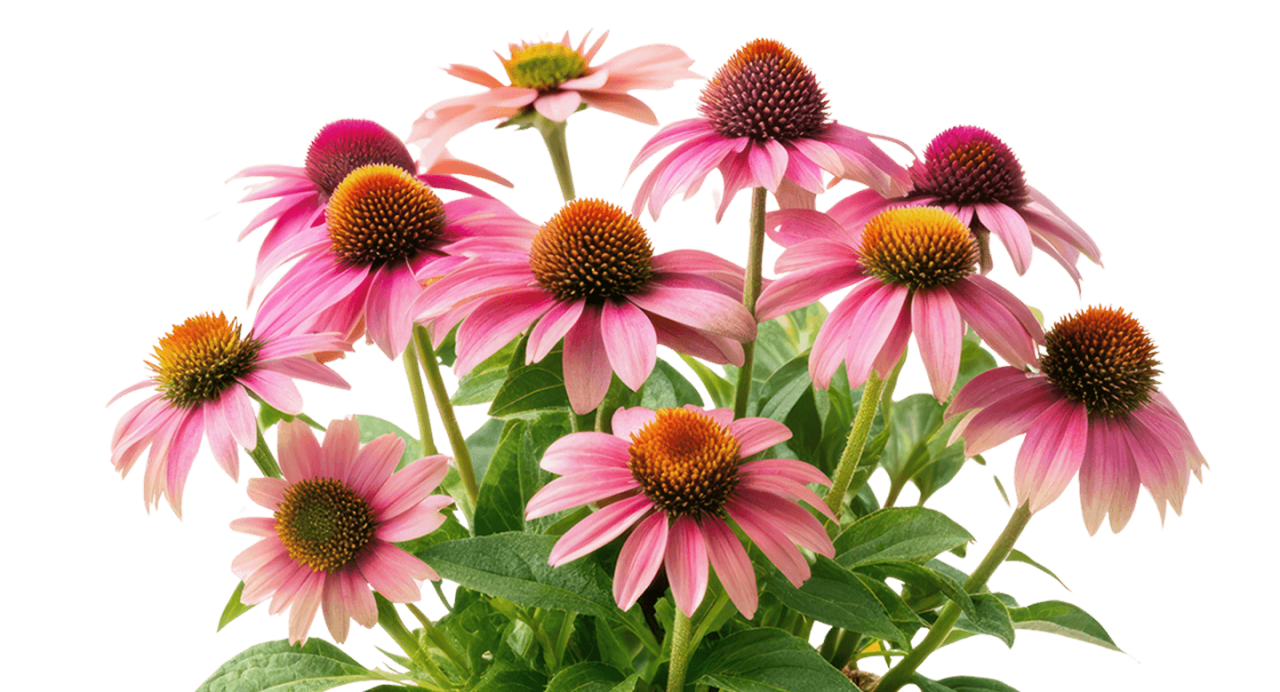How to Care for Echinacea
Download the PDF version
Low-maintenance beauty
Echinacea, or coneflower, is a hardy perennial that attracts pollinators like bees and butterflies. These low-maintenance plants bloom from mid-summer to fall, bringing long-lasting colour to garden beds and naturalized areas.
Light
Echinacea thrives in full sun, needing at least six hours of direct light daily. In cooler climates, it can tolerate some afternoon shade without significantly affecting blooms.
Watering
Water regularly during the first growing season to help roots establish. Once established, plants need water only during prolonged dry spells. Avoid overwatering—it prefers well-drained soil.
Soil & Planting
Plant Echinacea in well-draining soil enriched with compost or organic matter. It prefers slightly acidic to neutral soil (pH 6.0–7.0). Space plants 45–60 cm (18–24″) apart to allow good air circulation.
Growth Habit
Plants typically reach 60–90 cm tall and 45 cm wide. Their upright stems and daisy-like blooms make them great for mid-border planting or naturalistic beds.
Fertilizing
Echinacea seldom requires fertilizer in good soil. In poorer soils, apply a slow-release, balanced fertilizer in early spring. Avoid overfeeding as it may reduce flowering.
Pruning & Deadheading
Remove spent blooms to encourage continuous flowering. In late fall, leave some seed heads for birds. Cut stems to ground level in early spring before new growth appears.
Winter Care
Hardy across Zones 3–9, Echinacea rarely needs mulch in mild regions. In colder areas, apply a thin layer of mulch in late fall. Leaving dried stems provides winter interest and wildlife habitat.
Pests & Disease
This plant is generally pest-resistant. You might see aphids or Japanese beetles; treat early with insecticidal soap. Good drainage and spacing help prevent fungal issues like powdery mildew.
Bonus Tips
Echinacea self-seeds and can spread naturally—remove seedlings if unwanted. It pairs well with black-eyed Susan, yarrow, and ornamental grasses to create a pollinator-friendly garden.